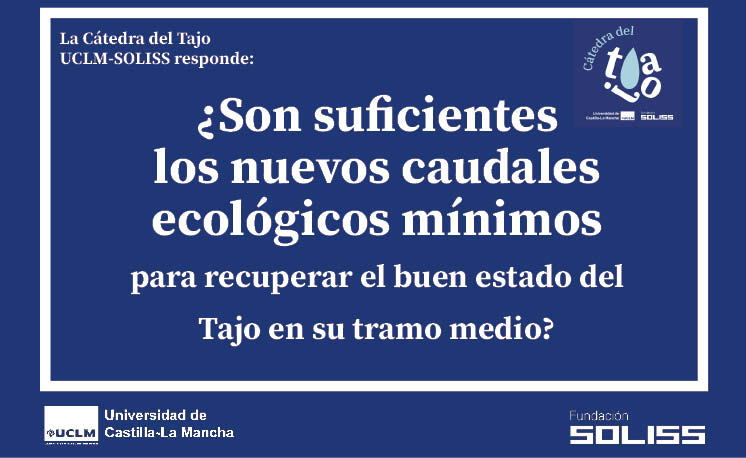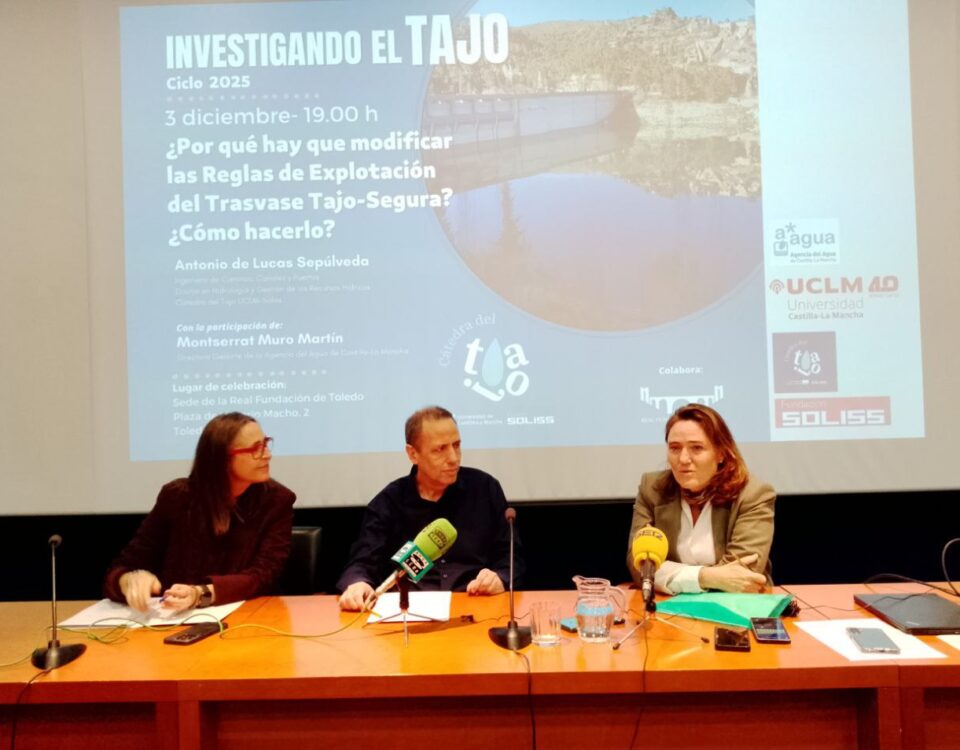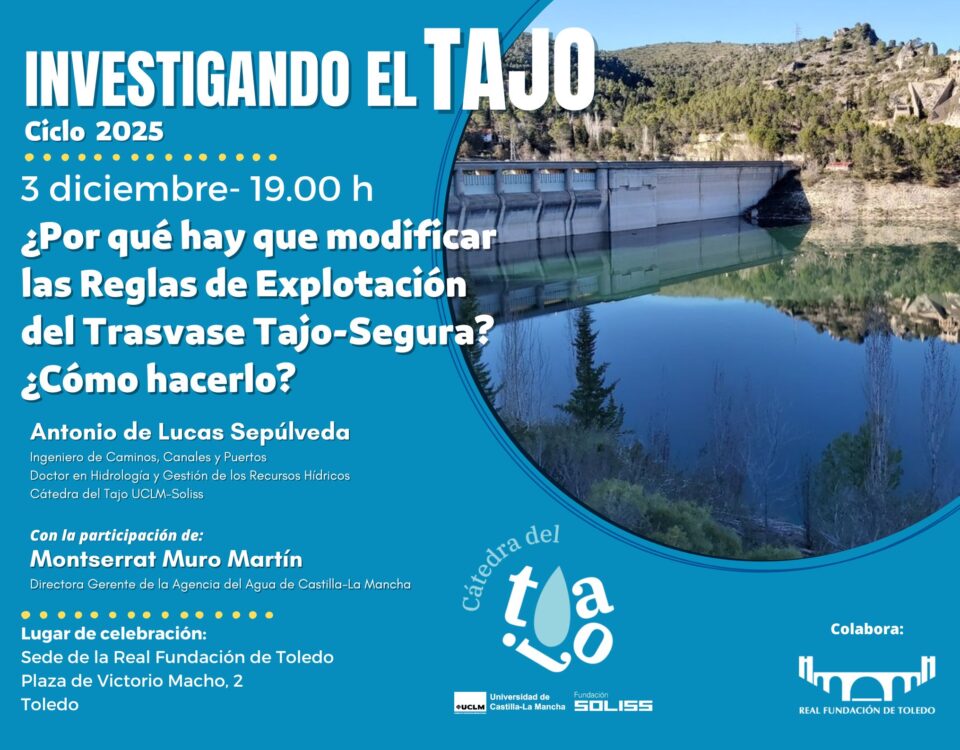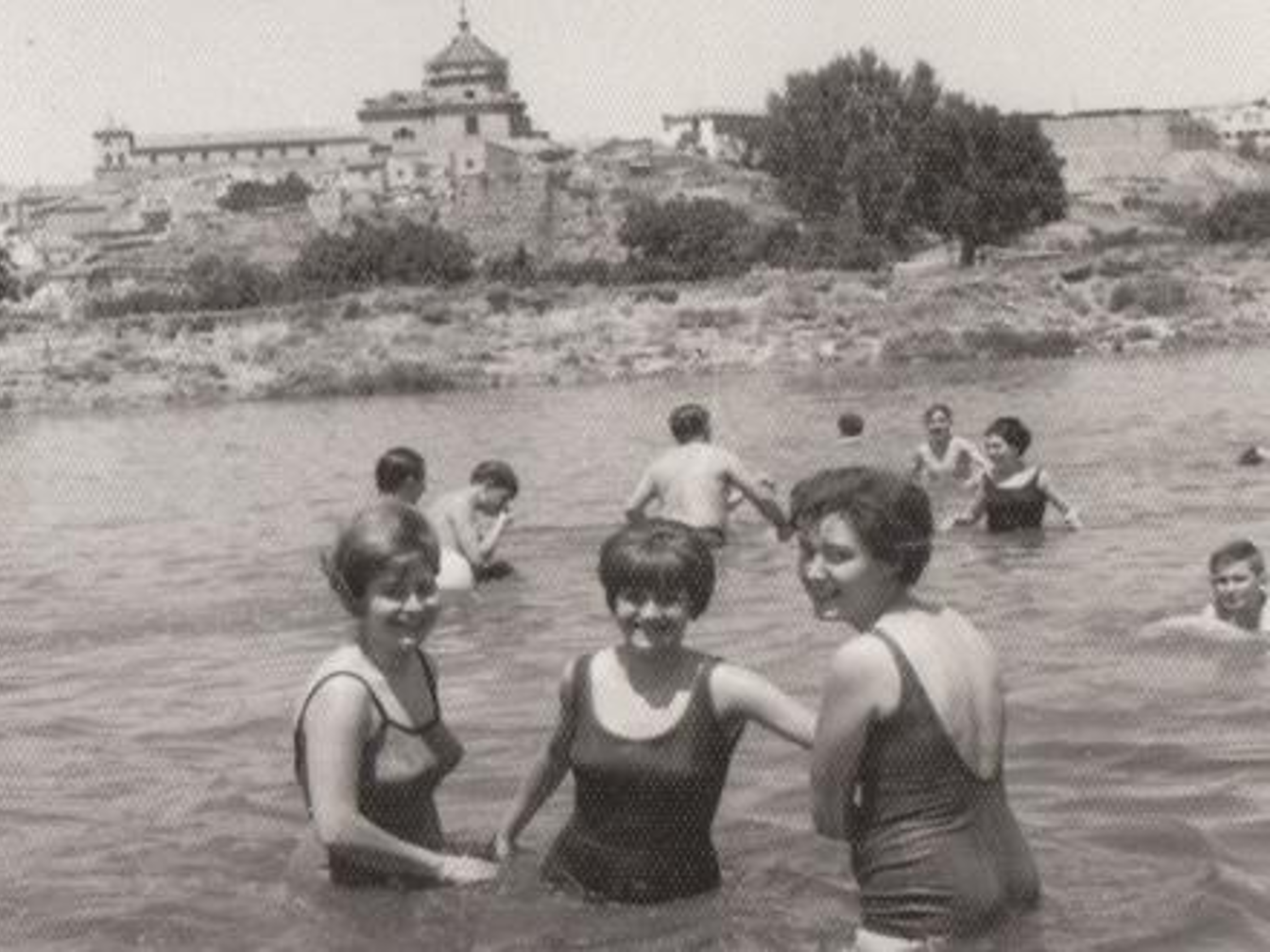
“Testimonies of the Tagus River in Toledo”, next event in the lecture series of the UCLM-Soliss Tagus Chair
31/05/2022
The UCLM-Soliss Tagus Chair Responds: Is there any justified reason for the flows in the middle section of the Tagus River to fall below the legal minimum?
29/06/2022- The new Tajo Hydrological Plan projects minimum ecological flows that are insufficient to achieve good status river environment
- In Aranjuez, The delay is neither technically nor legally justified. in establishing minimum ecological flows
- In Toledo and Talavera, the minimum proposed flows are lower than the actual flow of the river in recent years, so they will not represent any improvement
- The Plan contemplates variations in minimum flows on a quarterly basis instead of a monthly basis, and with few differences between the stations.
- It is necessary to set minimum ecological flows based on ecosystem studies, to ensure habitat protection and preserve protected areas
The Hydrological Plan Project for the Tagus basin, approved by the Demarcation Water Council, establishes new minimum flows for the river. But, while waiting for the procedures to continue until its final approval, the scientific and technical team of the UCLM-Soliss Tagus Chair considers The minimum flows of this new Plan in the middle section of the Tagus are insufficient to achieve good environmental status, for several reasons.
Starting from Aranjuez, if the real flow of recent years is compared (see the blue line) with the minimums that have been established in the new Plan (red, orange and yellow lines), it is expected that there will be some improvement, since it will be It is mandatory that the real flows be higher than those currently circulating. However, This slight improvement will not occur immediately, but over three periods of time.: first, until December 2015 (red line); then during 2026 (orange line); and finally, as of January 2027, the year in which the validity of the Plan ends (yellow line). There is no legal or technical justification to establish the minimum flow in three phases.
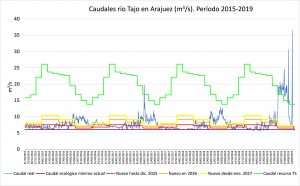
Source: own elaboration based on the latest data available in the CEDEX Capacity Yearbook.
Given that today the Tagus as it passes through Aranjuez is in poor condition, Delaying improvement with this timing harms the entire ecosystem river. And it has been established even though the zone includes protected areas such as Sites of Community Importance (SCI) and Special Protection Areas for Birds (SPA), which also exist upstream and downstream.
Proposal of minimums, minimums
Four bodies of water of the Tagus River between Bolarque and Aranjuez have his condition has worsened in recent years with respect to the first cycle, which indicates the need to establish higher flow rates minimums and establish the rest of the components of an ecological flow, such as periodic generating flows (those that allow natural floods in the river floodplain). It is important to remember that ecological flows with all their components are a tool contemplated in our hydrological planning to improve the state of rivers.
In the case of Toledo and Talavera, the new minimum ecological flows they will not mean any improvement in the river state. The data show us that the real flows have already been above the values that are now set in recent years, as can be seen in the graphs. On the other hand, minimum flows of identical magnitude have been set in Talavera and Toledo. This makes no sense considering the logical sequence of the river, which receives greater contributions downstream, due to accumulation.
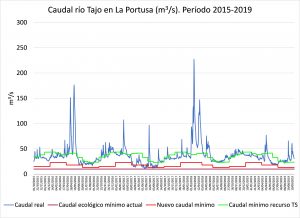

Source: own elaboration based on the latest data available in the CEDEX Capacity Yearbook.
Questionable methodologies
Furthermore, the minimum flows that have been proposed in this third planning cycle in these three bodies of water are very far from those proposed in the tell us on which the legal claims against the Hydrological Plan of the second cycle were based and which ended in the partial annulment of the Plan through five rulings from the Supreme Court (see the green line in the three graphs). These studies used methodologies based on the fulfillment of the objective of good condition, as well as the achievement of the objectives of conservation of their habitats and species typical of the Natura 2000 Network protected areas.
Prior to the proposal of new minimum ecological flows, it would have been necessary to carry out an analysis of the consequences that previous minimum flows have had on the state of the water masses (in terms of their morphology and the conservation of their habitats and species, differentiating the Natura 2000 Network areas), in order to be able to correctly determine the needs of the river, as considered by the researcher Domingo Baeza.
Likewise, the academic team of the UCLM-Soliss Tagus Chair considers greater ambition necessary to be able to comply with the obligation to conserve these protected areas, the most ideal being the application of methodologies based on habitat simulation that aim to maintain 100% of the habitat. In protected areas, going below that percentage would mean a deterioration of the habitat. It should be noted that there is a lack of knowledge about the habitat in some bodies of water, where scientific-technical studies are still necessary.
Regulations based on environmental data
In conclusion, for the Tagus River to reach its good environmental status, an essential measure is to have minimum ecological flows that guarantee the maintenance of plant and fauna communities. Additionally, in Natura 2000 Network protected areas, minimum flows must meet the specific requirements for protected habitats and species, so these may be higher.
The methods used to establish minimum ecological flows must be those that are best adapted to achieve these purposes. leaving aside other interests to the river's environmental objectives. These methods must have in-depth knowledge of the habitat and its species, as well as the hydrological behavior of the river.
Finally, it is more appropriate to establish minimum ecological flows in monthly series, rather than quarterly, to reduce the difference between the natural regime of the river and the regulated one in Mediterranean rivers. And more importantly, a monthly distribution is recommended that also establishes greater variations between some seasons and others, in order to achieve this reduction.
Audio with the explanation of Beatriz Larraz, director of the UCLM-Soliss Tagus Chair:
Article presentation video:

